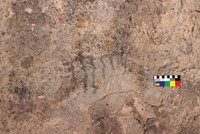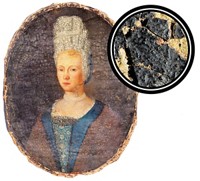Advertisement
Grab your lab coat. Let's get started
Welcome!
Welcome!
Create an account below to get 6 C&EN articles per month, receive newsletters and more - all free.
It seems this is your first time logging in online. Please enter the following information to continue.
As an ACS member you automatically get access to this site. All we need is few more details to create your reading experience.
Not you? Sign in with a different account.
Not you? Sign in with a different account.
ERROR 1
ERROR 1
ERROR 2
ERROR 2
ERROR 2
ERROR 2
ERROR 2
Password and Confirm password must match.
If you have an ACS member number, please enter it here so we can link this account to your membership. (optional)
ERROR 2
ACS values your privacy. By submitting your information, you are gaining access to C&EN and subscribing to our weekly newsletter. We use the information you provide to make your reading experience better, and we will never sell your data to third party members.
Analytical Chemistry
Radioactive-Decay Dating Fingers Neanderthals As Possible Cave Artists
Cultural Heritage: Uranium-to-thorium decay method identifies age of calcite deposits on top of Paleolithic cave art in Spain
by Sarah Everts
June 14, 2012

Scientists spelunking in 11 Spanish caves have used an uncommon radioactive-decay method to date Paleolithic wall art, showing that some of the paintings may have been made by either Neanderthals or the earliest humans in Europe (Science, DOI: 10.1126/science.1219957).
The dating method uses mass spectrometry to measure trace levels of uranium and thorium found in thin crusts of calcite that build up on the cave art, explains Alex W. G. Pike, a radioisotope specialist at the University of Bristol, in England, who led the study.
The water that deposited this calcite contained trace amounts of dissolved uranium but no thorium. Thus, any thorium present in the calcite is the result of uranium’s radioactive decay into thorium. By comparing ratios of thorium and uranium in calcite crusts on the art, the team was able to establish minimum ages for some 50 Spanish cave paintings. In three cases, the art was dated to between 35,600 and 40,800 years ago.
Neanderthals were definitely present in Europe during this era, whereas modern humans likely appeared around 41,000 to 42,000 years ago, says João Zilhão, a Neanderthal expert at the University of Barcelona, who was involved in the study.
It could be another nail in the coffin of the stereotyping of Neanderthals as “dumb,” Zilhão says. “From what we know of Neanderthals, there’s no reason to think they didn’t have the capacity” to make the cave art, because they painted their bodies with paint made from sophisticated cosmetic recipes, he adds.
The research also establishes uranium-to-thorium decay as a reliable way to date cave paintings, notes John Hellstrom, an Earth scientist at the University of Melbourne, in Australia, in an associated commentary in Science (10.1126/science.1224185). Carbon dating is unreliable for most cave art, Pike says, because the pigments used in the wall art are minerals and contain only trace amounts of carbon. Furthermore, carbon contamination from microbial growth and other sources makes it hard to do reproducible carbon dating.
Although the uranium-to-thorium dating technique is decades old, the mass spectrometry method initially required gram-sized samples. That’s far too large a sample to remove from valuable art or artifacts, and in this case, much more calcite than could be responsibly removed from above the cave art.
“The uranium-thorium dating has become 10,000 times more efficient since its invention,” Hellstrom notes. Now it requires only milligrams of sample, he says, making the technique “mature enough for widespread use in this field.”





Join the conversation
Contact the reporter
Submit a Letter to the Editor for publication
Engage with us on Twitter